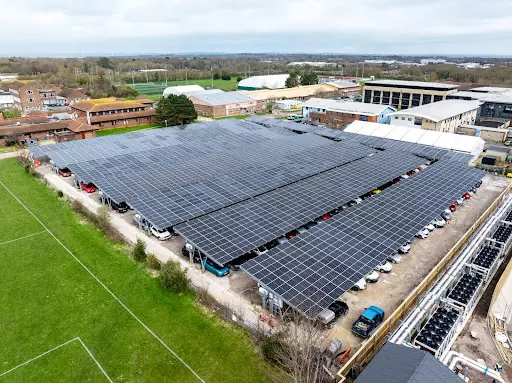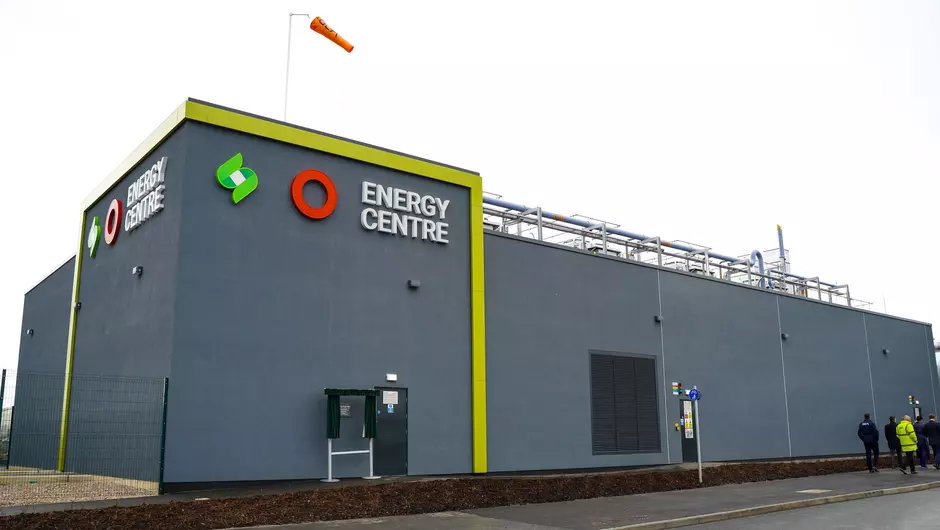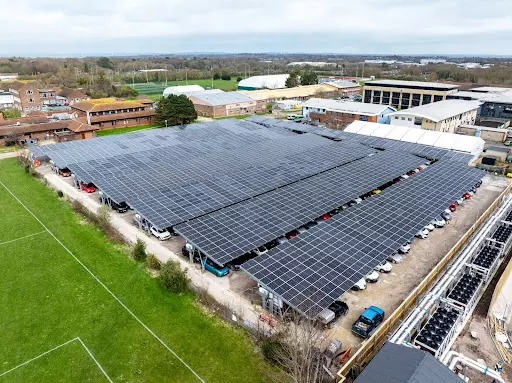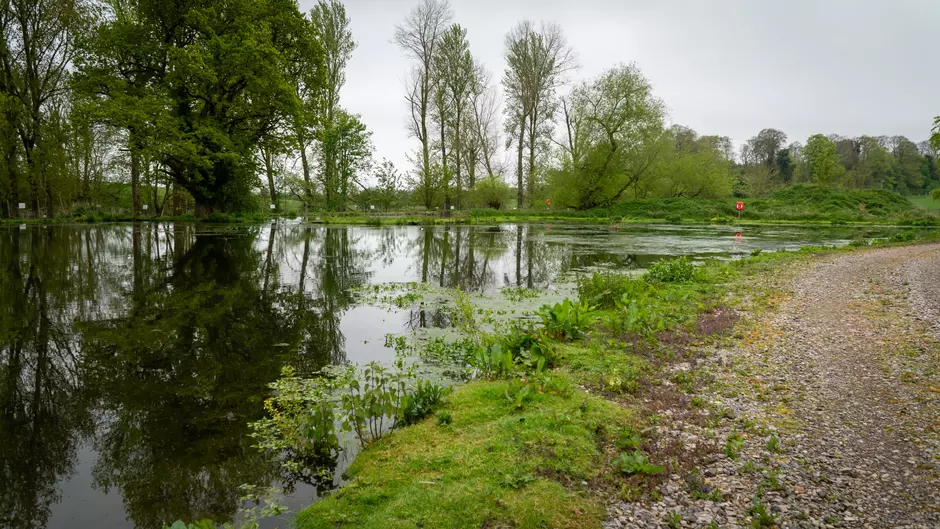Unlocking government funding can accelerate the public sector’s journey to Net Zero and there are several grants available, bringing decarbonisation goals realistically closer. Our recent LinkedIn Live with Andrew Whitworth, Head of Development, and Lucy Stephenson, Business Development Lead, outlines all you need to know about successfully securing Public Sector Decarbonisation Scheme (PSDS) funding.
What is the Public Sector Decarbonisation Scheme (PSDS)?
PSDS is a government-funded initiative designed to accelerate the decarbonisation of public sector buildings. While the Low Carbon Skills Fund (LCSF) helps develop decarbonisation plans and strategies, the PSDS secures the capital investment to execute decarbonisation plans.
Launched in 2020, the scheme helps public bodies, including schools, hospitals, and local government buildings, to implement energy efficiencies and low-carbon heating measures. A highly successful initiative, PSDS has already funded £2.7bn across 1,000 projects. Phase 4 was launched in February 2024, allocating £1.2bn between 2025-28.
Download the PSDS presentation slides.
What are the advantages of PSDS funding?
PSDS funding offers several key advantages, allowing you to reach your sustainability targets, including:
- Reduced Carbon Emissions
The grant is centred around the reduction of emissions. Results vary from project to project but our recent work at Eastbourne Hospital reduces emissions by 4,000 tonnes of CO₂ per annum.
- Flexibility
A significant advantage of PSDS is that the funds can be used flexibly. You can select and adopt innovative technology, with solutions specific to your goals and site.
- Financial Savings
For many, there are substantial cost savings. For those approaching the end of low-energy tariff contracts, utilising PSDS funding to generate on-site energy will ensure consistent energy costs - avoiding sudden price hikes.
- Enhanced Energy Security
By allowing you to generate more energy on-site, it reduces your reliance on energy from fossil fuels and ensures a secure energy supply.
- Improved Energy Infrastructure
Removing ageing fossil-fuelled equipment and supporting modern infrastructure installation will improve the overall buildings and facilities energy efficiencies.
- Education Opportunities
The use of innovative methods allows for the demonstration of new, sustainable technologies, which in turn raises awareness and positively influences the entire sector to become more environmentally sustainable.
How to apply for PSDS funding?
Applying for PSDS funding involves a formal online application process, with full guidance expected to be released in Summer 2024. While awaiting the official guidelines, applicants can refer to the previous application forms and guidance available on the Salix website to prepare their submissions effectively.
The application process requires the following:
- All forms and additional documentation need to be submitted by the applicant.
- There is a requirement to decommission a primary, end-of-life (10+ years) fossil fuel plant.
- You must take a 'whole building' approach, considering not only the heating source but also energy efficiency measures like insulation, double glazing, and LED lighting to reduce the building's energy demand.
- The design must be detailed with a feasibility investigation.
- We anticipate that organisations must financially contribute at least 12% of the total grant money received, adhering to a 1 or 2 year construction period.
How will PSDS be awarded?
Phase 4 of PSDS is being awarded according to the best value for money on the most direct CO₂ savings. This is different from previous years when it was first come first served. Also, applications now place additional emphasis on the importance of heat networks.
View our LinkedIn Live to learn what you need to know about the Public Sector Decarbonisation Scheme (PSDS).
- NHS Trusts and Foundation Trusts
- Local authorities or government bodies can apply on behalf of schools
- Central government departments
- Emergency services
- Higher education
- Schools within state system
- Nurseries maintained by local authorities
- Within England
Funding will be evenly allocated across healthcare, education and the remaining public sectors.
- Public corporations
- Private sector organisations
- Registered charities (unless non-departmental public bodies)
- Social housing
- Universities ‘whose revenue comes mostly from private funding and international student fees’
- Outside of England
If your organisation is ineligible for PSDS, alternative funding options are available across the United Kingdom. Our team has extensive knowledge of various funding opportunities. Complete an enquiry form to discuss the suitable funding options for your organisation.
How to develop a PSDS project
A project funded by PSDS typically has four phases: application support, procurement, design and build, and long-term operation and maintenance. We offer expertise to assist you throughout this process. If you’re looking for support, we have the expertise to help you at every point of this process:
- Application
Assistance in the design and feasibility phase, leveraging the Public Sector Decarbonisation Scheme (PSDS) where possible, and guiding the application development process. - Procurement
Identifying and addressing customer-specific requirements, and navigating internal procurement processes or relevant frameworks. - Design and Build
This phase typically spans 1-2 years, involving project development activities and the procurement of necessary technologies. - Operation and Maintenance
This is the phase where your organisation meets Net Zero goals. Spanning a typical period of 10-20 years, this phase covers ongoing operation and maintenance, with the potential to expand and redefine the scope of activities in alignment with Net Zero goals.

PSDS in practice: University Hospitals Birmingham NHS Foundation Trust
Veolia’s previous success securing PSDS funding is demonstrated at University Hospitals Birmingham NHS Foundation Trust, with both Good Hope Hospital and Queen Elizabeth Hospital included in the scheme. The Trust serves over 2.2 million patients annually, with over 20,000 members of staff across seven sites.
By implementing heat pump and solar technologies across two large hospitals, these initiatives are projected to cut CO₂ emissions by a remarkable 3,847 tonnes per year, demonstrating a significant stride towards meeting their Net Zero targets.






